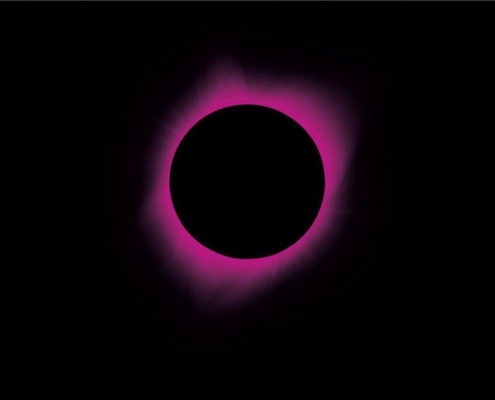The title mimics these random spam email titles or advertisements. We can also see the words like ‘order now’ in a McDonald’s kiosk. If you look at some works, the pieces are made of plastics, electric wires, and polished steel like sports cars. The sleekness and transparency of the materiality in the exhibition also presents current society. All laptops, cars are glossy and sleek, like our touch screen. Not only physical sleekness but non-physical materials are supposed to work smoothly. In “Rejunevate Body Order Now”, this sleekness got disturbed. This sleek surface of used motorbike and cars parts are manipulated, distorted, twisted and wiggled by my languages to be transformed into more-than-human-body. Also, these twisted motorbike parts are missing organs. They got muscle-like, flesh-like, liquid-like, a chunk of matter entangled with wires. Organic and mechanical shapes are entangled here, presenting posthuman bodies.
Do you have some specific references that guide you during your creative process?
In my process, it is both instinct and hands that are guiding me. I am drawing a lot, although I don’t use them as sketches. Even while working on sculptures based on sketches, I find a better way to solve it. I just grab a drill or a metal saw and start to chop up some plastic waste. Holding materials is the fundamental starting point of my process. By doing, and working with hands, sometimes I find form, a style that is interesting, that often narrates my current interest, curiosity, and subject matter. Then some techniques can lead me to a new language. My memory, what I have seen, what I have read is also coming in a certain way. When I look back on my childhood, some days with my friends in primary school, we rented a pile of mangas, then read them together. I am the generation that grew up with Sailor moon, dragon ball Z. Somehow, human transformation was always a significant interest. Also, science magazines and nature documentaries are part of my daily life.
What are you working on at the moment?
Currently, I’m preparing two group shows in Munich and LA and a solo show in Berlin. I am revisiting all my practice, focusing on my painterly approach, bringing it into sculpture and installation, which contains my years of practice. I’ve been investigating hybridity, transgression, mutation, and in-out bodies. Perhaps going back to giving human body signifiers, I plan to merge it with my languages to create my cyborg dancers. That could be born out of our social junk mixed with organic matters — plants, fishes, junk, e-waste, and freely chosen gender that embodies. In the occurring body-horror fascination in the art scene, I would like to bring up questions on the over-sexualised female cyborg, alien images in manga culture, H.R Giger, and Hajime Sorayama, while not denying my fascination. This enthusiasm often might have blurred the problematic issues. Can we be fascinated with these visual images whilst we have a critical point of view? I’d like to embody these thoughts for the upcoming pieces.
 https://www.nastymagazine.com/wp-content/uploads/2024/04/5_Rhizome_Magdelana_Bella_Garth_Harry_Ophelia-2048x1311-1.jpg
1024
1600
Editor Nasty
https://www.nastymagazine.com/wp-content/uploads/2015/02/new-logo-basker-WHITE4.png
Editor Nasty2024-04-10 10:37:092024-04-10 11:00:11Casey Gleghorn / Downtown’s finest Art Delivery
https://www.nastymagazine.com/wp-content/uploads/2024/04/5_Rhizome_Magdelana_Bella_Garth_Harry_Ophelia-2048x1311-1.jpg
1024
1600
Editor Nasty
https://www.nastymagazine.com/wp-content/uploads/2015/02/new-logo-basker-WHITE4.png
Editor Nasty2024-04-10 10:37:092024-04-10 11:00:11Casey Gleghorn / Downtown’s finest Art Delivery

















